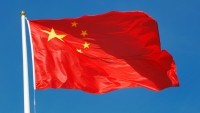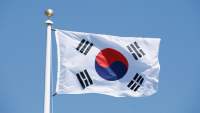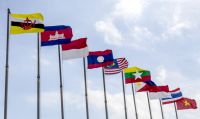New rules in APAC: Nutra regulatory developments firms should be aware of in 2021

In this round-up, we look at the key regulatory updates that firms should be aware of in China, South Korea, India, Australia and South East Asia.
China
Expansion of the Health Food Raw Material Directory From March 1, companies can go through the health food filing route when registering health foods made of fish oil and four other raw materials.
Fish oil, coenzyme Q10, melatonin, spirulina, and Ganoderma lucidum were added into China’s Health Food Raw Material Directory in December last year.
China’s State Administration for Market Regulation (SAMR) said the move has helped to standardise the name of the raw materials, dosage amount, and the health indications of each raw material for use in health foods.
A successful filing application allows a product to be sold in China’s offline channels as well.
Prior to that, the directory only consists of vitamins and minerals.
New nutrition supplements and health function interpretations New nutrients and new nutrients compounds are added into the Health Food Raw Material Directory of Nutrition Supplement and will come into effect from March 1.
The SAMR issued the 1) Health Food Raw Material Directory of Nutrition Supplement (2020 version) and 2) Permitted Health Functional Claims for Nutrition Supplements listed in the Health Food Raw Material Directory (2020 version) in last December.
Key changes made include the addition of a new nutrient and several new compounds.
The nutrient, beta-carotene, has been added into the Health Food Raw Material Directory of Nutrition Supplement.
The compounds of eight existing nutrients are also added into the Health Food Raw Material Directory of Nutrition Supplement.
Examples include calcium citrate malate, magnesium gluconate, potassium gluconate, ferric pyrophosphate, zinc acetate, selenoprotein, D-sodium pantothenate, and choline chloride.
This has “provided more choices for companies to choose raw materials and suppliers,” said Hangzhou-based regulatory consultancy firm CIRS.
The authorities also provided interpretations of health functions of vitamins and minerals listed in the Health Food Raw Material Directory.
For instance, vitamin D is said to “facilitate absorption of calcium”, while vitamin B12 “helps with the formation of red blood cells”.
“Companies can use one or more corresponding nutrient functional claim standard terms in the definition on the label of health foods, which has a positive significance for product promotion.”
South Korea
General food with function claims Progress on general food with function claims has been closely watched by the industry.
Preliminary information on the general food with function claims were released by South Korea’s Ministry of Foods and Drug Safety (MFDS) in July 2020.
During the 10th FOODPOLIS International Conference held in July 2020, it was said that 29 raw materials, that are currently amongst the list of permitted functional raw materials, can be listed as general foods with function claims.
They include ginseng, red ginseng, chlorella, spirulina, propolis extract, guava leaf extract.
The permitted claims for general foods with function claims can range from “helpful in immunity enhancement, fixing fatigues” for ginseng, to “helpful in skin health, antioxidation, immunity enhancement, reducing blood cholesterol” for chlorella.
The function claims cannot be directed to the health-conscious groups, such as pregnant women, elderly, and children.
Also, the functional component, for instance, ginsenoside in ginseng, needs to be 30% of the Reference Daily Intake (RDI). The products should also be manufactured at a facility with HACCP certification.
The authorities have been mulling over this particular initiative since 2019.
A private, public joint task force team consisting of members from the consumer group, general and functional foods association, corporations, experts, and government held in-depth discussions between April and October 2019, Young-Hui Shin, senior deputy director of Food Safety Labelling and Certification at MFDS said at the conference.
They have been deliberating the function claims that could be used so as to prevent false labelling and cause confusion in the general public.
“I think MFDS proposed this regulation of general foods with function claims, because they want to develop, improve the food industry, they want to make other kinds of foods, rather than health functional foods.
“[This is] because the application of health functional foods is really costly and will require a lot of technical support,” said Lorraine Li, Chemlinked regulatory analyst.
Krill oil imports under scrutiny Until August 31 this year, all imported Antarctic krill products, including supplements, will need to be proven safe before they could be successfully imported into the country.
The one-year long policy started on 1 September 2020 last year, after the MFDS detected banned solvent or excessive amounts of residual solvents in imported krill oil products during an inspection.
Products will need to be examined at testing facilities designated by the MFDS.
India
Food Safety and Standards Amendment Regulations 2020India will be implementing a set of revised rules governing the nutraceutical industry this year.
The country’s regulator, FSSAI, had earlier released the draft of the new regulation, known as Food Safety and Standards (Health Supplements, Nutraceuticals, Food for Special Dietary Use, Food for Special Medical Purpose, Functional Foods and Novel Foods) Amendment Regulations, 2020.
It is an amendment to the 2016 version and will be implemented either on Jan 1 or July 1 this year, subjected to a minimum implementation date of 180 days from the date of its final publication in the official gazette.
A number of changes are suggested in the draft of the 2020 version.
For instance, changes on regulations relating to vitamins and minerals have been suggested.
Previously, under the General Requirements (Regulation 3), the mere combination of vitamins and minerals formulated in tablets, capsules, syrup are not regulated, unless they are added into a food or are in a food format.
Under the new suggestions, vitamins and minerals formulated in tablets, capsules, syrup at levels equal to one RDA or below shall be covered under these regulations.
“The food business operators will need to carefully evaluate products containing vitamin-mineral combinations or single vitamin/mineral dosage forms, for compliance to the specified requirements under the new clause,” Arundhati Kasbekar, head, global regulatory services, food products at regulatory consultancy Freyr Solutions told us.
The regulator also suggested to add seven more sub-regulations into the General Requirements.
Most of them are regulated to infants and young children.
For instance, products for children under five years old shall be given only under medical advice by physician/certified dietician/nutritionist.
The regulations are not applicable to products for infants below six months old.
In addition, any supplement/nutraceutical/specialty food containing botanical ingredients with safe history of usage, or food with added probiotic/prebiotic ingredient for toddlers between six and 24-month-old are not permitted without prior approval of the Food Authority.
On the other hand, Kasbekar said the FSSAI had announced the discontinuation of 14 ingredients for use under the subsection regulating nutraceuticals due to the lack of scientific data for safe usage.
They are raspberry ketone, silica, angelica sinensis, paullinia cupana, saw palmetto, notoginsing, chlorella growth factor, pine bark extracted to pinus radiate, pine bark extracted from pinus pinaster, Vitamin D3-veg, chaga extract, oxalobacter formigenes, phytavail iron and tea tree oil.
The food business operators were also asked to discontinue antichoke, kale powder, salvia hispanica, cashewfruit, passion fruit, kiwi fruit extracts, broccoli and enzymes, including pectinase and xylanase, as health supplements.
“No further manufacturing of products using these ingredients will be allowed until these ingredients are assessed and approved by the authority,” Kasbekar said.
South East Asia
ASEAN finalises supplement rules after 16 years ASEAN’s 10 member states are set to finalise the ASEAN Agreement on Regulatory Framework for Health Supplements in November 2021, after 16 years of discussion.
There are currently no harmonised regulations for the registration of dietary supplements in ASEAN and each country has varying standards.
The harmonisation of technical requirements and guidelines for health supplements will remove non-tariff barriers, attract investments, increase production capacity, promote research and development, and job creation in the region populated by 600 million.
Harmonisation will make it easier for a supplement manufacturer to sell the same product formulation in all 10 ASEAN countries and will be more attractive for companies to make their products in one or more ASEAN countries instead of producing them elsewhere and importing them into the region, boosting the local economy.
The regulations will also set rigorous standards to ensure safe and high-quality products, which increases consumer trust in ASEAN.
The ASEAN Alliance of Health Supplement Associations (AAHSA) which represents the health supplement industry in the member countries, estimates that the ASEAN harmonisation has the potential increase the CAGR to between 8.6% and 13.6%, which is driven by the reduction of technical obstacles to trading across borders in ASEAN.
The Traditional Medicines & Health Supplements Product Working Group (TMHS PWG) and its Scientific Committee (ATSC) which was set up to map out the harmonisation strategy has since develop 10 technical requirements and guidelines to form the regulations.
It covers manufacturing standards, labelling requirements and whether or not a certain ingredient can be used.
The target date of signing the finalised agreement is November 2021, but implementation is key to succeed.
According to Daniel Quek, chairman of AAHSA, ASEAN countries will have a maximum of five years to fully implement the health supplement requirements.
Wai Mun Poon, regulatory affairs consultant at Wong SJ Asia Pte Ltd said companies should already start complying to the existing 10 technical requirements.
Quek added: “Some countries have gradually begun to adopt parts of the harmonised health supplement requirements. Clearly the biggest challenge will be the capacity and capability of each ASEAN country local regulator and industry to translate the requirements into local regulations.”
In addition, “Local and international companies should join the local healthy supplement industry association if they have not already, because the local associations have been a key part of the harmonisation process, working with AAHSA, and so would be an invaluable resource.”
The harmonisation of health supplement regulations will continue to be an ongoing partnership between governments and the private sector, represented by bodies such as AAHSA and its member associations.
Australia
‘Made in Australia’ claims less stringent on the industry There are now more avenues in which Australian nutraceutical brands are able to claim that their products are made in Australia.
This is after the Australian parliament passed the Competition and Consumer Amendment (Australian Consumer Law – Country of Origin Representations) Bill 2020 on October 27 last year.
This has expanded the number of criteria which allows nutraceutical firms to claim that their products are made in Australia.
Under the new framework, a product that is 1) grown and produced in Australia and/or 2) as a result of processing, the product is fundamentally different in identity, nature or essential character from all of its imported ingredients or components can bear the ‘Made in Australia’ claim.
Under the new framework, the processing also has to take place in a Therapeutic Goods Administration (TGA) licensed facility.
However, the covering of products in containers, packaging, labelling, storage, testing, and release of the product for supply are not considered ‘substantial transformation’ even if the processes took place in a TGA-licensed facility.
Nonetheless, this is a crucial development as many companies use imported ingredients to make their nutraceutical products.
“This is very good news, historically, the industry was really nervous about this. We were thinking nothing we made would satisfy the ‘substantially transformed’ test, because 75% to 80% of the ingredients we use come from overseas,” Gabriel Perera, founding partner at product development and regulatory consultancy firm Take Friday Off told us.
Nature’s Care is a classic example.
It was not permitted to make the country-of-origin claim for its Fish Oil 1000 + Vitamin D3 soft gel capsules although the encapsulation of the imported ingredients was done in Australia.
There are also some nutraceutical companies which have used a bar chart to express the proportion of Australia-grown ingredients used in their products.
According to Perera, this is not necessary for nutra firms, although it could be a bonus point when communicating to the consumers.
Clearer demarcation for sports nutrition products Sports supplements will be regulated as a therapeutic good so long as they make therapeutic claims and/or contain high risk ingredients, and/or come in tablets, capsules, and pills.
From November 2020, such products will need to be entered in the Australian Register of Therapeutic Goods (ARTG) and regulated as therapeutic goods before they could be advertised and sold in the market.
Others which do not contain the higher risk ingredients but come in tablets, capsules, or pills and make therapeutic claims have to comply with the requirements by 30 Nov 2023.
When regulated as therapeutic goods, the products will need to be produced in a TGA licensed facility.
“Going into the TGA route means they have to move the production into a TGA licensed facility, including packaging, so there is a cost impact,” said Perera.












